Click on images to enlarge
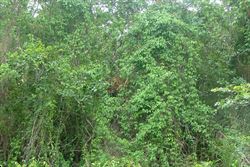
infestation (Photo: Sheldon Navie)
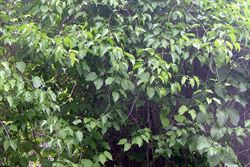
climbing habit (Photo: Sheldon Navie)
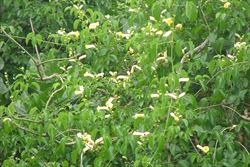
habit in flower (Photo: Sheldon Navie)

thick woody older stem (Photo: Sheldon Navie)
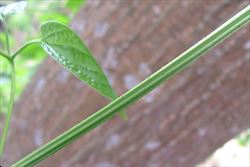
ribbed younger stem (Photo: Sheldon Navie)
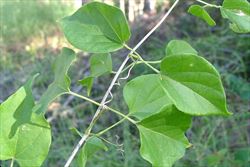
leaves usually have two leaflets and a three-branched tendril (Photo: Sheldon Navie)

hairy young growth with tendrils developing at the ends of the leaves (Photo: Sheldon Navie)
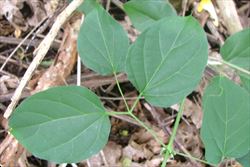
lower leaves sometimes have three leaflets (Photo: Sheldon Navie)
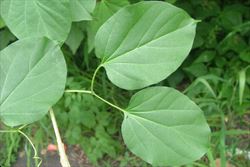
leaves occasionally lack tendrils and have only two leaflets (Photo: Sheldon Navie)

close-up of leaflet (Photo: Sheldon Navie)
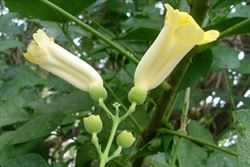
tubular flowers with whitish outsides (Photo: Sheldon Navie)

close-up of flower showing five petal lobes and yellow throat (Photo: Sheldon Navie)
Scientific Name
Pithecoctenium crucigerum (L.) A. H. Gentry
Synonyms
Bignonia crucigera L.
Family
Bignoniaceae
Common Names
Brazilian white bellflower, monkey comb, monkey-comb, monkeycomb, monkey's comb, monkey's hairbrush, monkey's-comb
Origin
Native to southern Mexico, Central America, the Caribbean and tropical South America.
Naturalised Distribution
Locally naturalised in south-eastern Queensland.
Notes
Monkey's comb (Pithecoctenium crucigerum) is regarded as a minor environmental weed in south-eastern Queensland.

